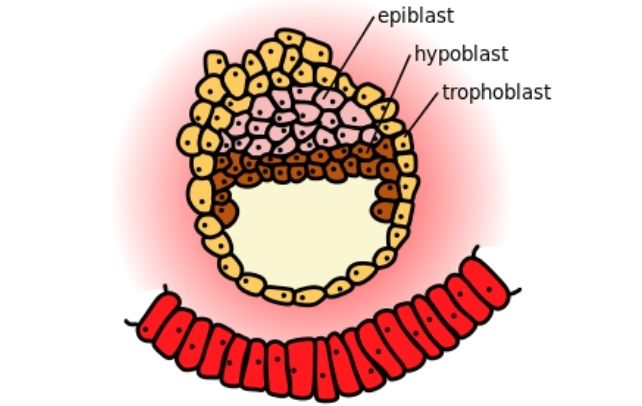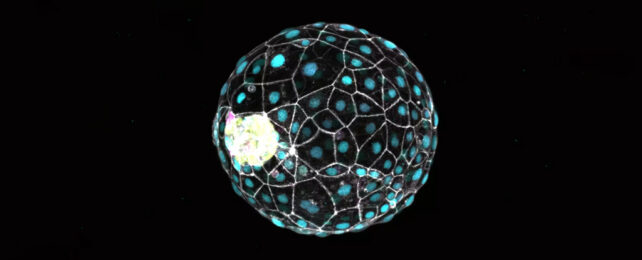Fragments of DNA left by viruses that infected our distant ancestors may be 'firestarters' for new human life, new research finds.
"Our results illustrate how recently emerged… genes can confer developmentally essential functions in humans," Stanford University biologist Raquel Fueyo and colleagues write in their paper.
Fueyo and her team used a ball of stem cells induced to mimic a blastocyst, the phase of embryonic development about five days after fertilization. This 3D model, or blastoid, replicates the developmental stage just before the embryo implants into the uterus's lining.
When the researchers disabled a group of remnant virus genes known as LTR5Hs, the embryonic model either turned into a disorganized clump of cells or died. Without the LTR5Hs, the middle layer (epiblast) of the three-tissue-layered blastoid did not form properly.
Related: 'Pause Button' Molecule Uncovered in Human Embryos

Up to 9 percent of our DNA is composed of genetic material from ancient viral invaders. These endogenous retrovirus remnants infiltrated the genetic material of our ancestors' reproductive cells millions of years ago and are now permanently integrated into our genetic blueprints.
LTR5Hs appeared in our ancestral line around 5 million years ago, after humans and other great apes had parted ways with 'old world' monkeys such as baboons and macaques.
While this may seem like a long time ago, by evolutionary standards this is a relatively recent change in our genome.

"Many of the LTR5Hs genomic insertions in the human genome are unique to our own species," Fueyo and team explain.
"We have shown that [LTR5Hs] activity is required for blastoid formation and lineage identity."
The researchers found that this regulatory gene is responsible for increasing the expression of other nearby sequences, including a gene known as ZNF729 that plays a key role in stem cell multiplication and determining cell identity. Low expression of ZNF729 leads to an entire layer of embryonic tissue forming incorrectly.
The team suspects that by boosting ZNF729, the LTR5H gene group made it more 'sticky', giving our ancestors a significant evolutionary advantage.
"These observations suggest that evolutionary remodeling of gene-regulatory networks can result not only in species-specific innovation but also create new dependencies and bestow essentiality on recently emerged [regulatory] elements and genes," the researchers conclude.
This research was published in Nature.
